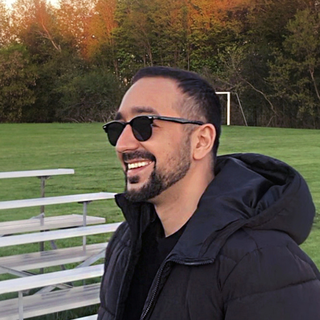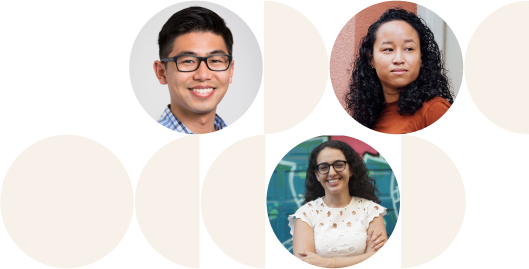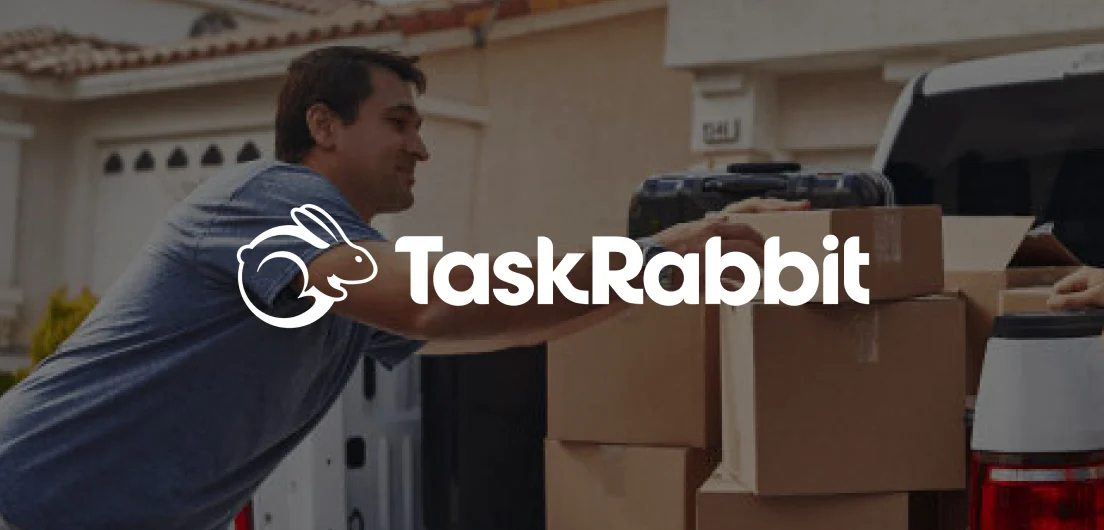You need to hire. We're here to help.
Find and hire top Product Designers, fast.
Get matched to 3 highly-qualified Product Designers in minutes.
Hire Top Product Designers.png)
.png)
.png)
How to hire top Product Designers at Braintrust
Post a job
Create an account and publish your job posting free of charge.
Review candidates
Manage and hire top talent instantly.
Get to work
We simplify onboarding, invoicing, compliance, and more.
Meet our Product Designer community
Braintrust is a user-owned talent platform created by and for the world’s top talent. This includes a talented network of experienced Product Designers available for hire.
Looking for Work

Ricardo Leon Jimenez
- Prototypes
- Visual Design
Looking for Work

Rashad Talibli
- Product Design
- User Interface
Looking for Work
.png)
Charlie Gann
- Product Design
- UX/UI Design
How to hire Top Product Designers

Overview
Hiring a high-quality Product Designer involves numerous considerations. These professionals play a crucial role in shaping the user experience of a product, merging aesthetics, functionality, and business goals. Given the interdisciplinary nature of their work, assessing candidates requires a comprehensive approach.
When hiring for a startup, look for a designer who is versatile, able to wear multiple hats, and comfortable in a rapidly changing environment. They should ideally have a broad range of design skills, including UX (user experience) and UI (user interface) design, customer experience, market research, prototyping, user research, and possibly even some front-end development. In contrast, a larger company might allow for more specialized roles, and you might look for a new product designer with deep expertise in a specific area like mobile design, data visualization, or accessibility.
Additionally, you should consider whether to hire a full-time employee or an hourly contractor. A full-time product designer may be more immersed with team members in your company's culture, will have a better understanding of your product over time, and can offer consistency. However, a full-time employee also represents a bigger commitment, both in terms of cost and management. On the other hand, an hourly contractor might be a good fit if you have a well-defined, short-term project. They can also offer fresh perspectives and specialized expertise.
In terms of design skills, a proficient product designer should possess a solid understanding of design principles, technical skills to use industry-standard software, a user-centered mindset, strong problem-solving abilities, and excellent communication and collaboration skills. Furthermore, they should demonstrate an understanding of brand identity and business and strategic goals, technical feasibility, experience across different devices and platforms, and a commitment to continuous learning and adaptability.
Experience and portfolio quality are key. Examine the candidate's previous work closely, looking for not only the final product but also their visual design process. How do they approach problem-solving? How do they incorporate user feedback? How do they adapt their designs to meet business goals?
Finally, the cultural fit should not be overlooked. The ideal candidate should align with your company’s values, work well with your existing design team, and be able to thrive in your specific company environment, whether it's a fast-paced startup or a large corporation.
Hiring a product designer is a complex task that involves weighing technical skills, problem-solving ability, business acumen, and cultural fit. By carefully considering these aspects, you can find a product designer who will contribute significantly to your product's success.
Design Skillset
A product designer's skillset is a crucial factor to consider during the hiring process. This goes beyond just having a knack for creating aesthetically pleasing designs and product ideas. A competent product designer should demonstrate a profound understanding of digital product development, ecommerce, and graphic design principles and industrial design principles such as balance, hierarchy, contrast, and repetition, among others. They should be able to translate a product's purpose, users' needs, and business goals into an appealing and functional design. Technical skills are important as well; proficiency in industry-standard software like Sketch, Figma, InVision, and Adobe XD is often required. Proficiency in these tools allows the designer to create wireframes, prototypes, and high-fidelity designs. Additionally, skills in vector graphics tools like Adobe Illustrator can also be beneficial for creating unique design elements.
Understanding of User Experience (UX)
An effective product designer should have a robust understanding of user experience principles. This means that they design with the end-user in mind, considering how a user interacts with the product, and making it as intuitive and enjoyable as possible. They should be familiar with creating user personas, journey maps, and conducting user testing. Knowledge of UX research methods like surveys, interviews, and usability tests is essential to gather insights about user needs and behaviors. Experience in using tools such as UserTesting, UsabilityHub, and Hotjar can be a great asset here.
Problem-solving ability
The very essence of design is problem-solving. A great product designer should have an analytical mind and the ability to think critically. They should be able to identify problems users might encounter when using a product, propose potential solutions, and validate these solutions through testing. Design is an iterative process, so they should be comfortable with revising their work based on feedback and testing results. Skills in rapid prototyping, A/B testing, and data analysis can be beneficial here. They should also have experience with tools like Maze for usability testing, and data visualization tools such as Tableau or Google Data Studio for analyzing and presenting test results.
Communication and Collaboration Skills
Excellent communication is vital for a product designer. They often work in cross-functional teams and need to be able to effectively articulate their ideas and design decisions to diverse stakeholders, including product managers, developers, marketers, and even executives. This means they need to be able to speak the language of these different roles to some extent, conveying design concepts clearly and persuasively. Skills in presenting and public speaking can be beneficial. They also need to be receptive to feedback and be able to collaborate effectively with others. Tools like Slack, Microsoft Teams, or Zoom for communication, and tools like Jira or Asana for project management, can be part of a product designer's toolkit.
Understanding of Business/Strategic Goals
A top-tier product designer understands that design is not solely about aesthetics or even user experience, but it also involves aligning with business and strategic goals. They should be able to demonstrate how their designs contribute to the achievement of these goals, whether it's driving user engagement, reducing churn, increasing sales, or improving user satisfaction. This involves a good understanding of business metrics and KPIs and often requires the ability to analyze data and draw meaningful insights from it. Familiarity with data analysis tools like Google Analytics, Tableau, or Looker can be beneficial here. Designers should also be able to work effectively with product managers to understand and incorporate the product's roadmap and strategy into their designs.
Technical Knowledge
While product designers don't need to be expert developers, some technical knowledge is often a big plus. Understanding the basics of front-end development languages like HTML, CSS, and JavaScript can be beneficial, as it helps in communication with developers and understanding technical constraints. Knowledge of the platform they're designing for (iOS, Android, web, etc.) and the associated guidelines (Material Design for Android, Human Interface Guidelines for iOS) is also essential. Familiarity with version control systems like Git can also be beneficial.
Experience Across Different Devices and Platforms
The best product designers have experience designing for multiple devices and platforms. This is because each platform has its own conventions and best practices, and a design that works well on one might not work as well on another. For instance, designing for a touchscreen on a mobile device is quite different from designing for a mouse and keyboard on a desktop computer. Experience with responsive design principles and tools is often required. Familiarity with design systems like Google’s Material Design and Apple’s Human Interface Guidelines is a plus, as these provide established patterns that users of those platforms will already be familiar with.
Continuous Learning and Adaptability
Given the rapid evolution of technology and design trends, it's critical for a product designer to demonstrate a commitment to continuous learning and adaptability. This might include staying current with the latest design trends, learning new tools as they become industry standard, or even expanding their skills into related areas like motion design or augmented reality. This requires a mindset of lifelong learning, and often involves self-study, online courses, or even attending industry conferences or meetups. Having a wide range of tools in their toolkit, such as Figma for collaborative design, After Effects for motion design, or even Unity for AR/VR design, can be a testament to a designer's commitment to continuous learning.
Expert Resources for Hiring Product Designers
Frequently Asked Questions
How much does it cost to hire a Product Designer?
The cost of hiring a Product Designer varies based on a number of factors, including their experience level, the complexity of the project, and geographic location. The average salary for a full-time Product Designer in the United States is above $85,000 per year, with senior roles often reaching six figures. If you're hiring a freelance Product Designer, rates can vary from $50 to $200 per hour or more. Remember, you often get what you pay for in design. While it can be tempting to go with the cheapest option, a skilled designer can significantly improve the user experience and success of your product.
Where can I hire a Product Designer?
There are many places to find Product Designers for hire. LinkedIn, Behance, and Dribbble are popular platforms for finding professional designers, with portfolios that can be reviewed to assess their work. Job sites like Indeed, Glassdoor, and AngelList can also be useful. If you're open to hiring a freelancer, sites like Braintrust have numerous listings for Product Designers. Local networking events or design meetups can also be a good place to connect with designers in person.
How do I recruit a Product Designer?
Recruiting a Product Designer involves several steps. First, identify your needs: the skills required, the nature of the project, and the type of designer (e.g., full-time, contract) you're looking for. Next, create a job posting for a product designer job with a compelling job description that clearly communicates these requirements, as well as what you offer as a company. Then, post this job description on job boards, social media, and professional design sites. Review applicants' portfolios and resumes, and shortlist candidates based on their skills and experience. Conduct interviews to assess their problem-solving abilities, communication skills, cultural fit, and understanding of your business needs. Reference checks can further help you ensure you're making a good hire.
How much does a Product Designer charge per hour?
The hourly rate for a Product Designer can vary widely based on their years of experience, the complexity of the work, and location. Freelance product designers in the U.S. typically charged between $50 and $200 per hour, though rates could be higher for highly experienced designers or lower for those just starting out. Remember, when you hire product designers and negotiate rates, consider the value a skilled designer can bring to your design projects in terms of improved user experience, increased customer satisfaction, and alignment with your business goals.
Is UX design the same as product design?
UX (User Experience) design and product design are closely related, but they're not identical. UX design focuses on creating seamless, efficient, and enjoyable experiences for users. It involves understanding user needs and behaviors, creating user flows, designing interfaces, and testing designs for usability. On the other hand, product design is a broader concept that includes UX design but also involves considering business goals, market positioning, and technological feasibility. A product designer works on the overall conception of the product, encompassing both the user's experience and the strategic and business aspects of the product. In essence, UX design is one crucial part of product design.
What do you need to be a product designer?
Being a product designer requires a combination of technical skills, creative thinking, and strategic understanding. First, you need proficiency in design tools like Sketch, Figma, or Adobe XD. You also need a solid understanding of design principles and UX design methodologies. A good product designer knows how to conduct user research, create personas, develop wireframes and prototypes, and conduct usability tests. In addition to these technical skills, problem-solving skills are crucial. You need to be able to identify user problems and devise design solutions. Furthermore, understanding business and strategic goals, and aligning your designs with these, is critical. Communication skills, a collaborative mindset, and a commitment to continuous learning are also essential.
Do product designers make money?
Absolutely. Product designers play a vital role in shaping the user experience of a product, which can directly impact a company's success. Therefore, their skills are highly valued in the marketplace. The actual salary can vary widely based on factors like location, level of experience, the complexity of the role, and the type of company (startups versus large corporations). The average salary for product designers in the United States was above $85,000 per year, with senior roles and roles in high-cost areas often reaching six figures.
Which is better: UI/UX or product designer?
This question depends on the context. If you're thinking from a hiring perspective, it depends on the needs of your project or company. UI/UX designers focus more on the interface and the user experience, making them an excellent fit for projects heavily centered on user interaction improvements. On the other hand, product designers often have a broader range of responsibilities, including understanding and aligning with business objectives, making them a better fit for projects that require a holistic approach. If you're considering this from a career perspective, both roles offer rewarding opportunities. Your decision might be based on your interests—whether you enjoy focusing on the details of user interaction or prefer thinking about the product as a whole.
Get matched with Top Product Designers instantly 🥳
Hire Top Product Designers


.webp)

.webp)





